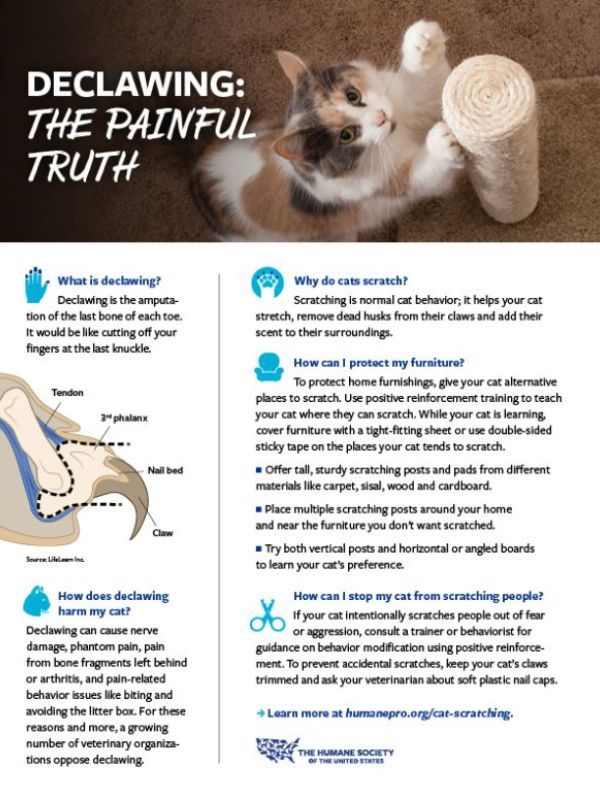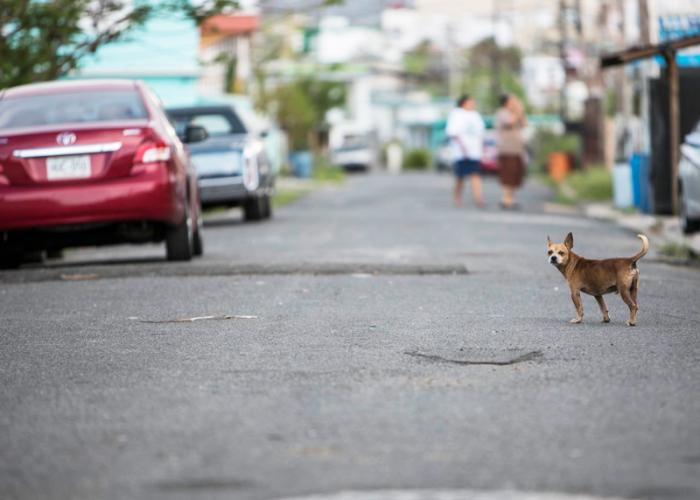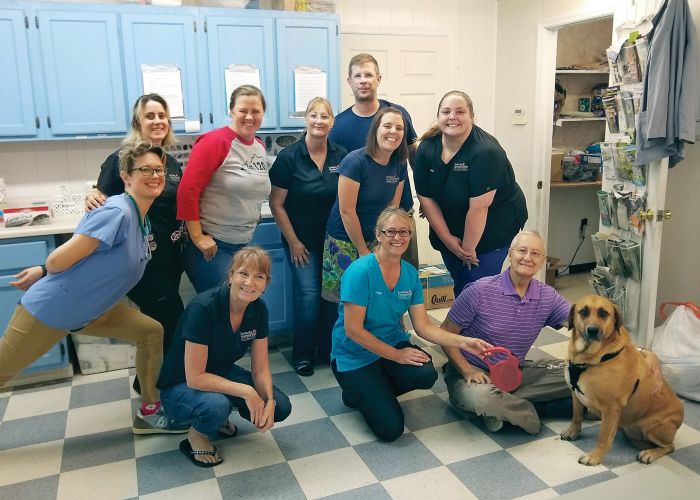Fact sheet: Declawing
Download this fact sheet to educate the public about the dangers of this unnecessary procedure

What is declawing?
Declawing is the amputation of the last bone of each toe. It would be like cutting off your fingers at the last knuckle.
How does declawing harm my cat?
Declawing can cause nerve damage, phantom pain, pain from bone fragments left behind or arthritis, and pain-related behavior issues like biting and avoiding the litter box. For these reasons and more, a growing number of veterinary organizations oppose declawing.
Why do cats scratch?
Scratching is normal cat behavior; it helps your cat stretch, remove dead husks from their claws and add their scent to their surroundings.
How can I protect my furniture?
To protect home furnishings, give your cat alternative places to scratch. Use positive reinforcement training to teach your cat where they can scratch. While your cat is learning, cover furniture with a tight-fitting sheet or use double-sided sticky tape on the places your cat tends to scratch.
- Offer tall, sturdy scratching posts and pads from different materials like carpet, sisal, wood and cardboard.
- Place multiple scratching posts around your home and near the furniture you don’t want scratched.
- Try both vertical posts and horizontal or angled boards to learn your cat’s preference.
How can I stop my cat from scratching people?
If your cat intentionally scratches people out of fear or aggression, consult a trainer or behaviorist for guidance on behavior modification using positive reinforcement. To prevent accidental scratches, keep your cat’s claws trimmed and ask your veterinarian about soft plastic nail caps.
Document








